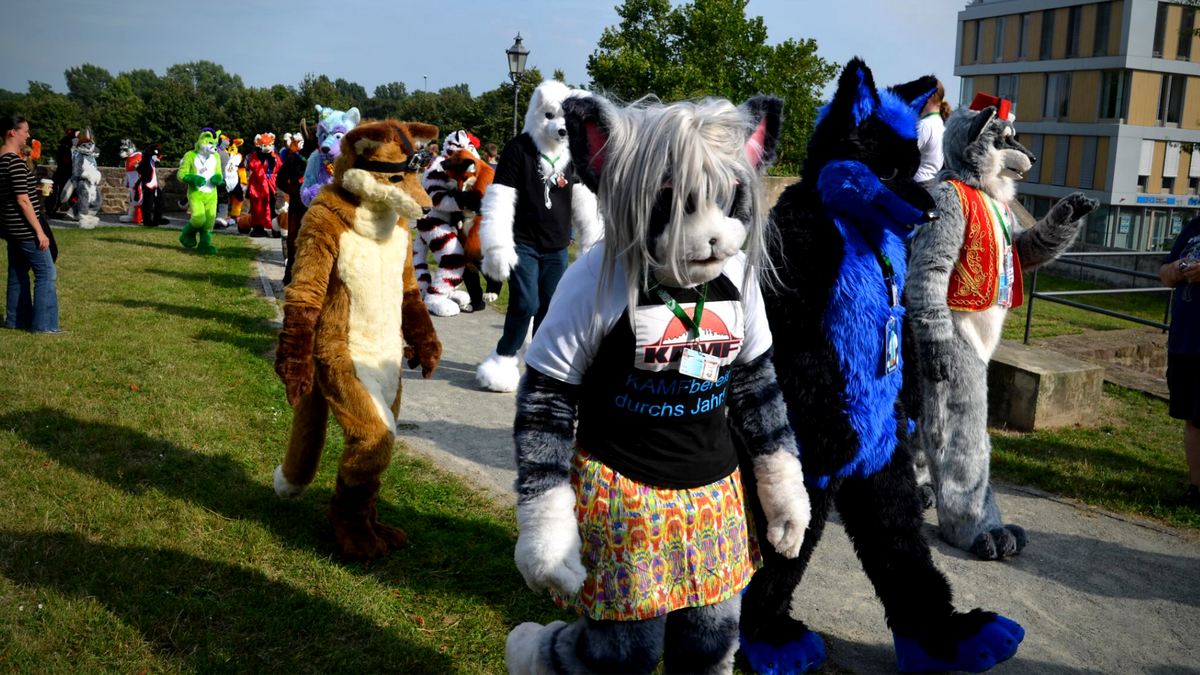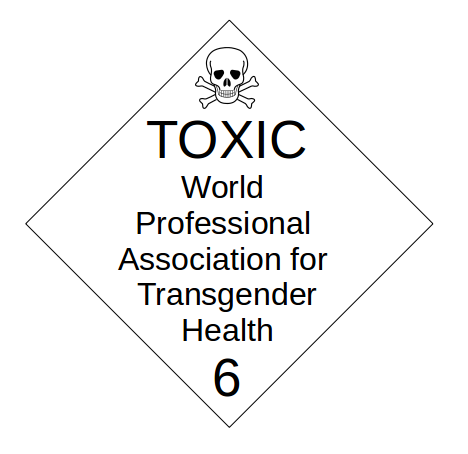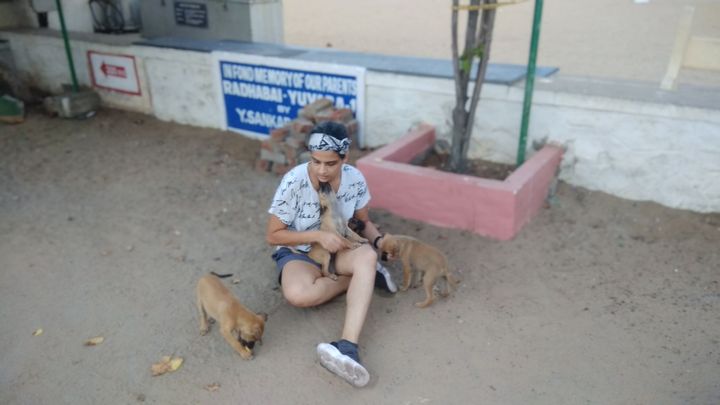Bad Journalism on ‘Furries’ Has Let Down Children and Animals
Journalists failed to connect "furrydom" to child abuse and animal torture and irresponsibly promoted the community as safe for children.

In 2006, “Colin Raccoon,” a systems programmer for the University of Waikato, was interviewed three times by New Zealand's media about the “furry” subculture: by the Waikato Times; by TV2 on a segment for “Eating Media Lunch,” and by TV3's Nightline.
Piggybacking on curiosity about furries piqued by a CSI episode, these pieces sensationalized Colin's furry lifestyle while failing to mention the only part of it which actually was newsworthy. What should have made the news about Colin was that, from the year 2000 until his death in 2014, Colin, under the alias “Nicol Firefox,” hosted thousands of explicit drawings of children on his website Cub Central—material then and now illegal in New Zealand.
It would have been possible for journalists in 2006 to trace Colin back to Cub Central. A drawing and costume of his furry persona Nicol was prominent in the header image for Nightline's segment. A Google phrase search for “Nicol Firefox” turns up a 2003 Usenet post in alt.fan.furry naming him in connection to the child-porn-hosting website. By 2009, when Stuff.co.nz ran another piece on Colin, his Wikifur page openly acknowledged his alias Nicol.
“Nobody told me about Colin’s illegal activity, although I met people who ought to have known.”
They didn’t notice. Neither did I. I met Colin briefly when I was sixteen, attending furry meet-ups in Auckland. Nobody told me about Colin’s illegal activity, although I met people who ought to have known. I discovered it years later, reflecting as an adult on my adolescent experiences with the subculture.
I learned that the child-porn hosting website Cub Central's co-founder “Trickster” was also prominent in furrydom, being co-founder of the Ohio convention Morphicon. I learned that Wikifur’s own founder and lead author is also owner and lead administrator of “Inkbunny,” a website created effectively to replace Cub Central when other furry websites banned drawn child porn.
From 2016 to 2017, a group of eight furries were brought up on charges of child sexual assault and possession of child abuse material. In 2018, leaks emerged incriminating at least seventeen furries, including one with over 100,000 YouTube subscribers, as engaging in organized animal torture and animal necrophilia.
In 2019, Discord users reported furry chat servers to the moderation team for bestiality and drawn child sexual exploitation material (CSEM); hundreds of reports were ignored by the moderators, several of whom were furries themselves. While only 3 percent of one anonymous survey of 3,267 furries were vegetarians, in 2012 as many as one in six self-identified as zoophiles.
Suffice to say this is not a particularly safe or supportive environment for young people, as journalists have in recent years irresponsibly characterised it as being. Even if furry events and websites were somehow kept free of covert pedophiles, zoophiles, and other abusers, they are still premised on generating attendance, content, and clicks. Their insistence on anonymity also militates against the development of any kind of stable, formal institutions of reciprocity and accountability. Website and chat server governance is informal and opaque. Costs are socialized: “furry” is a community when it suits the majority and when it doesn’t, the untraceable behavior of private individuals gets highlighted. If minors are exposed to furry porn, it's their parents' fault for letting them on the Internet—never mind that parents' time is money, the poor are getting poorer, and children like talking animals and don't play outside any more.
“While only 3 percent of one anonymous survey of 3,267 furries were vegetarians, in 2012 as many as one in six self-identified as zoophiles.”
Aged ten, I spent too much time on the internet because I was an anxious child in a country where English wasn’t my peers’ first language. By the time I was fourteen and became aware of the existence of the various extreme, bizarre, and violent sub-categories of furry porn, I had already been playing Furcadia (a virtual world game started by furries) on and off for years, and I had discovered Wikifur via the Creatures Wiki, a family-friendly video game wiki run by Wikifur’s founder, “GreenReaper.”
I had been led to believe, as per Anthrocon’s website, that sexuality played a marginal role in the fandom, and that Ancient Egyptians were furries because they drew animal-headed gods. Anthrocon’s promotional copy strikes me now, eighteen years later, as just one link in a chain of dissimulation and willful ignorance behind the failure of multiple parties in New Zealand to hold Colin accountable. It was simply a cover story, cooked up by fetishists who didn’t care that preserving their reputations meant covering for the animal rapists and distributors of drawn CSEM in their midst.
These bad-faith actors took advantage of the naivete and marginalization of the autistic and LGB youth that the welcoming, non-sexual idealization of the furry fandom appeals to. In the 1990s and 2000s, they hid behind the shame and cultural invisibility surrounding gender non-conformity and atypical sexuality of any kind, which occur more frequently in autistic people. They hid behind the documented appeal of anthropomorphism to autistic people: anthropomorphic animals remain interesting to autistic teenagers due to social delay and face-blindness.
“I had been led to believe, as per Anthrocon’s website, that sexuality played a marginal role in the fandom, and that Ancient Egyptians were furries because they drew animal-headed gods.”
Mostly, furries hide behind their internet anonymity, which they justify with the techno-libertarianism of Silicon Valley and the consent-reductionist (sex is ethical as long as “consent” can be said to be present) sexual rhetoric of San Francisco. In the early 1990s, furries were, according to one Silicon Valley insider, a key tech talent pool. The first free, user-modifiable multiplayer online world, with world-editing features seen later in popular games like Roblox, was created in 1996 by furries. Furries are still over-represented in the Bay Area and among internet professionals. There’s an apparent overlap between furries and Transhumanists: a Silicon Valley-centered political movement pushing for the deregulation of human genetic engineering.
Asked to tweet an open secret in his field, one IT professional claimed: "Telecommunications as a whole, which also encompasses The Internet, is in a constant state of failure and just in time fixes and functionally all modern communication would collapse if about 50 people, most of which are furries, decided to turn their pager off for a day."
These people are the experts when it comes to internet security and web development, not isolated amateurs. If they wanted to make sure children were not inadvertently drawn into their world, they could have coordinated to make it happen a long time ago.
Other second-generation former furries are beginning to see the pattern. “ConStaffWatch” on Twitter, an internet sleuth investigating the fandom from within, argues that zoophiles and pedophiles re-grouped in the 1990s within the furry fandom, after LGBT organizations formally disowned them as a result of campaigning spearheaded by lesbians.
In the video essay Bitter Pills, YouTuber “Archive the Wolf” identifies the cliche that pedophiles and animal abusers “have no place in the furry fandom” as a no-true-Scotsman fallacy which allows people to disclaim responsibility. "Our fandom is run by people who think being honest about what goes on in this community is worse than the rape of animals and children. They don't care who or what you hurt, just so long as it's not the carefully curated lie about what Furry is,” “Bitter Pills” states. “They will do anything to protect that lie ... because if people knew what's really going on here, they wouldn't be joining in, and they especially wouldn't stand for it to be marketed to children."
“Anthropomorphic animals remain interesting to autistic teenagers due to social delay and face-blindness.”
I’ve said a lot so far about the harm the furry subculture poses to children. We should also turn our attention to the implication for animals. For animals, the corollary of children and teens being involved in the furry fandom is that young people’s healthy interest in animals and the natural world is diverted away from organizations and activities which help protect biodiversity and animal welfare.
As the Holocene extinction accelerates and billions of animals suffer in factory farms, young people’s energies are being diverted into the use of electronic devices—extractively-produced technologies—tomorrow's e-waste and yesterday's exploited labor—to profit from the idea of animals. Animals in their real, ecological context are becoming displaced by the hyper-real simulation of animals.
Per Jean Baudrillard, things are said to be hyper-real when, abstracted out of their original context, their features that appeal to humans are exaggerated, while features rooted in human-independent reality are sanded off. For example: most people would choose to eat onion-flavored corn rings over raw onion slices, children choose banana-flavored sweets over real bananas. In furry-land, dogs come in neon colors and pigs actually can have wings. The hyper-real simulation is then commodified. It becomes a token of exchange: commissions of your character from high-profile artists draw potential customers to your own art; well-constructed fursuits in dance videos generate YouTube ad revenue.
I might be accused of bigotry, alarmism, or safetyism for writing this article, as people who unironically call on others to think of the children often are. It goes without saying that furries are a relatively niche child safety hazard. I don’t want anybody to panic, and I wrote this article mostly for a macabre laugh. It’s a side-show in history’s circus: the bio-sphere is drained of life so that childless nerds can fill the cyber-sphere with nymphomaniac animals. Nero fiddles with Fido on Amazon Web Services while the Amazon Rainforest burns. I’m reminded of a line from Richard Adams’ Watership Down: “Men will never rest till they’ve spoiled the earth and destroyed the animals.” Let’s hope his talking animals won’t have the last word.
Do you care about safeguarding? Help us publish female authors who bravely expose practices harmful to children!
We pay our all-female staff and writers thanks to your support on Patreon.




Comments